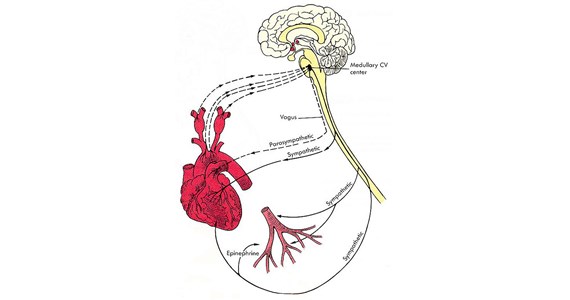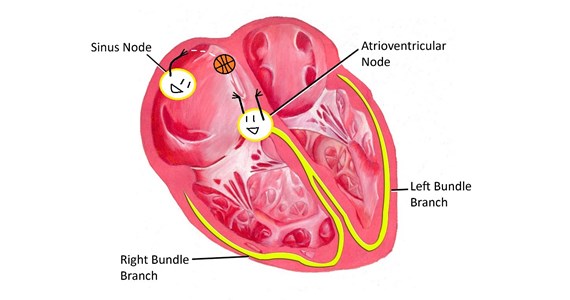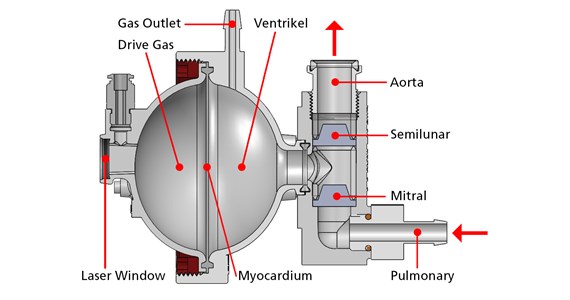Clotho functionality
Clotho, Lachesis and Atropos control the cardiac cycle of the Clio fluid pump and Thalia fluid exchanger. One cardiac cycle consists of systole (contraction) and diastole (relaxation) also named stroke. Stimulation of the cardiac control of the heart involves three separate pathways, which are associated with sensing of blood pressure (60-180 mm Hg), temperature (30-42°C) and pH. Although the cardiac cycle is initiated and co-ordinated by the Sinoatrial Node inside the heart, the cardiac output must be adjusted to meet the varying needs of the body. This involves the need of sensors and the autonomic nervous system. Stimulation of the heart by the Sympathetic-Nervous-System (SNS) increases cardiac output, by:
- increasing the frequency of the heart Beat-per-Minute (BpM), and
- increasing the driving force, power with which the cardiac muscle contracts
Stimulation of the heart by the para-Sympathetic-Nervous-System reduces the cardiac output by reducing the beat frequency and force of contraction. These two systems operate through negative feedback control involving controlling centres in the brain (Medulla). These are:
- the Cardio-Acceleratory-Centre (CAC) which is concerned with increasing cardiac output, and
- the Cardio-Inhibitory-Centre (CIC) which reduces cardiac output
The Sinoatrial Node automatic function inside the heart collaborate via PID algorithm with the CAC and CIC centres in the brain. Sensors for pressure, temperature, pH and stresses in general gives input to the CAC and CIC computers.
- Cardiac Output (CO) = total pumped/exchanged volume, SUP/SUE capacity, ml/min (CO = BpM x SV)
- Beats-per-Minute (BpM) = ranging 0 - 30 BpM, SUP/SUE diameter/stroke volume depending
- Stroke Volume (SV) = programmable from 10 - 100% of SUP/SUE specification
Clotho's brain Apollon copies the purpose of Medulla in the human brain and the human heart’s Sinoatrial Node and combines the features with the ability for interaction, programming, and functionality. The Apollon brain receives real-time signals from pressure, temperature, and displacement / LASER sensor info. Apollon regulate by positive feedback control a set of proportional valves for the BpM, and the driving force and movement of the elastic Myocardium wall inside the Clio or Thalia SUPs.
The Apollon brain is a super compact PLC, which houses a 900 MHz quad-core ARM Cortex-A7 CPU and 16 GB Ram. A range of 15-bit high speed in/out analogue and digital channels corresponds with various sensor’s and actuator’s in real-time.



